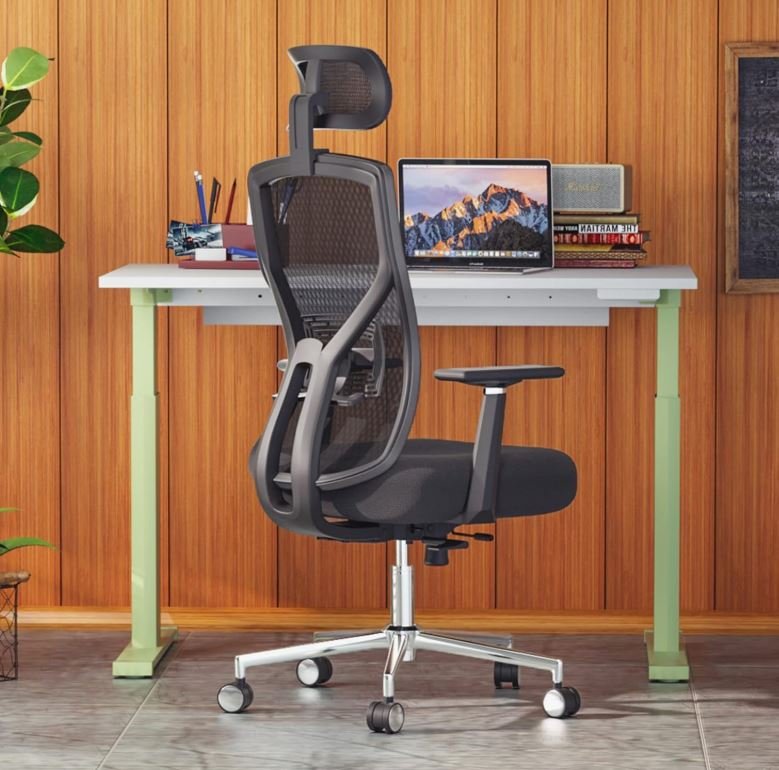Creating a productive office environment starts with ensuring that employees are comfortable and supported throughout their workday. One of the most important investments a business can make is providing an Ergonomic Office Chair for every workstation. Unlike traditional Ergonomic Office Chair, ergonomic chairs are specifically designed to support the natural curve of the spine, promote proper posture, and reduce strain on the body during long hours of sitting. By prioritizing employee comfort, businesses not only enhance productivity but also reduce the risk of workplace-related health issues.
The Importance of Ergonomic Design in Office Chairs
An Ergonomic Office Chair is built with features that accommodate the diverse needs of office workers. Adjustable seat height, lumbar support, tilt mechanisms, and armrest positioning allow each employee to customize their chair for maximum comfort. This adaptability is crucial for preventing back pain, neck strain, and repetitive stress injuries. Offices that invest in ergonomic furniture demonstrate a commitment to employee well-being, which can significantly improve job satisfaction and overall performance. Moreover, ergonomic chairs encourage proper posture, which contributes to long-term health benefits and reduces absenteeism due to musculoskeletal issues.
Boosting Productivity with an Ergonomic Office Chair
Comfortable employees are more focused and motivated. Using an Ergonomic Office Chair allows individuals to maintain concentration for longer periods, leading to higher efficiency and improved work quality. The adjustable features ensure that employees are not distracted by discomfort or the need to constantly shift positions. For businesses, this translates into better performance, faster task completion, and enhanced team collaboration. Additionally, providing ergonomic furniture helps create a professional office environment that reflects the company’s dedication to both employee welfare and operational excellence.
Features to Look for in an Ergonomic Office Chair
When selecting an Ergonomic Office Chair, it is essential to consider key features that promote health and comfort. High-quality lumbar support is vital to maintain the natural curve of the spine, while adjustable seat depth and height allow users to align their knees and hips correctly. Armrests that can be raised or lowered provide support for the arms and shoulders, reducing tension and fatigue. Breathable mesh materials improve airflow and prevent overheating, while a sturdy base and smooth casters ensure mobility and stability. Each feature works together to create a chair that supports both physical health and workplace productivity.
Ergonomic Office Chair for Different Work Environments
Work environments vary widely, and an Ergonomic Office Chair can be adapted to suit different office layouts. Open-plan offices benefit from chairs that offer mobility and flexibility, allowing employees to move between workstations or collaborate with team members easily. Private offices and executive suites may prioritize aesthetics and premium comfort, combining ergonomic functionality with stylish design. Even home offices can benefit from ergonomic seating, as remote work becomes increasingly common and employees spend extended hours at their desks. Investing in the right ergonomic chair ensures consistent comfort across all work settings.
Health Benefits of Using an Ergonomic Office Chair
The health benefits of an Ergonomic Office Chair extend beyond posture correction. Employees experience reduced tension in the back, neck, and shoulders, which lowers the likelihood of chronic pain and repetitive strain injuries. Properly aligned seating also supports better circulation, reducing fatigue and increasing energy levels throughout the workday. Over time, these benefits contribute to improved physical well-being, fewer sick days, and a more engaged workforce. For businesses, healthier employees mean reduced healthcare costs and increased operational efficiency.
Selecting the Right Ergonomic Office Chair for Your Team
Choosing the right Ergonomic Office Chair requires careful consideration of the specific needs of your workforce. Factors such as body size, work habits, and office layout should guide your selection process. Consulting with reputable suppliers or ergonomic specialists can help identify chairs that provide optimal support while meeting budget and aesthetic requirements. Investing in high-quality ergonomic chairs demonstrates a commitment to employee health, productivity, and long-term satisfaction, creating a workplace environment where everyone can thrive.
Ergonomic Office Chair: A Smart Investment for Businesses
Investing in an Ergonomic Office Chair is not merely a matter of comfort; it is a strategic decision that benefits both employees and the organization. By reducing discomfort and fatigue, ergonomic chairs enhance productivity and foster a culture of well-being. Employees feel valued when their workplace provides supportive furniture, which contributes to higher engagement, lower turnover, and improved morale. Additionally, modern ergonomic chairs are designed to complement office aesthetics, helping businesses create professional and attractive workspaces that reflect their brand identity.
Conclusion: Transform Your Office with Ergonomic Office Chair
The importance of an Ergonomic Office Chair cannot be overstated in today’s office environment. From supporting proper posture and preventing health issues to boosting productivity and employee satisfaction, ergonomic chairs are a vital component of a successful workspace. By selecting chairs with adjustable features, high-quality materials, and durable construction, businesses can create offices that are both functional and aesthetically pleasing. Investing in ergonomic furniture is a long-term strategy that enhances employee well-being, improves performance, and strengthens company culture. An Ergonomic Office Chair is more than a piece of furniture—it is a key element in building a healthier, more productive, and professional workplace.

